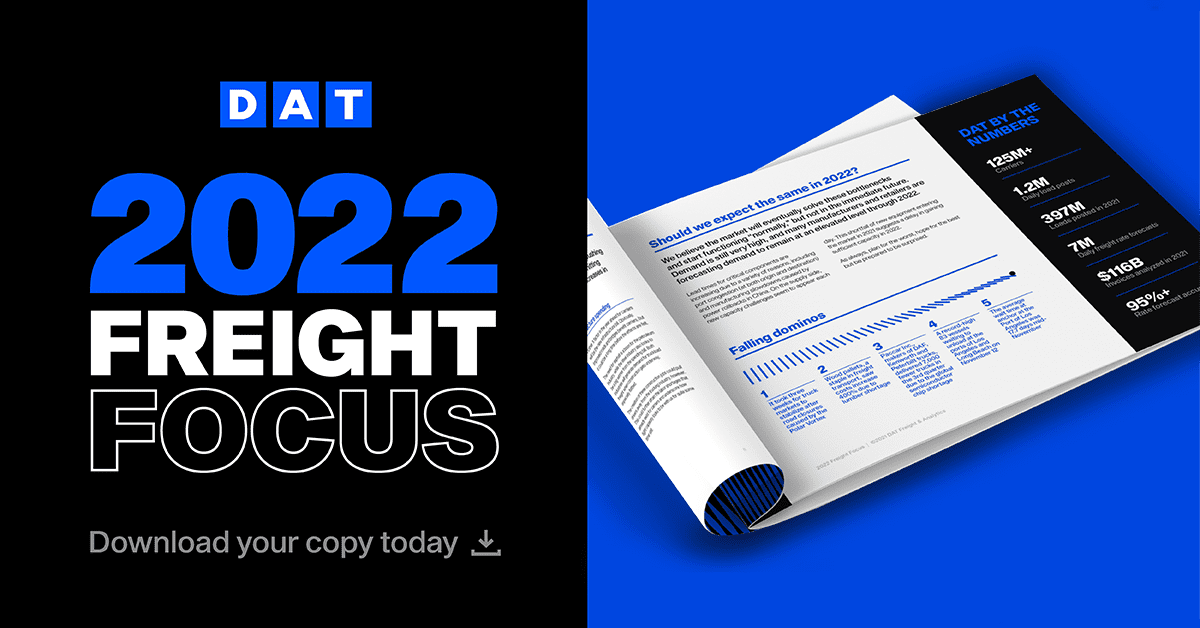Transportation got a seat at the table in 2021. But with this increased visibility comes heightened expectations. Executives want to avoid the inventory failures seen throughout the pandemic, while cost containment is likely to be a focal point for many organizations in 2022.
The challenge for logistics managers is delivering on these expectations given the uncertainties that continue to cloud the path forward. Solving these challenges requires transparency and flexibility.
Get your copy of 2022 Freight Focus: The Transportation Logistics Outlook to get the full report on how to navigate these volatile times.

Know when to be proactive or reactive
The lessons learned from COVID-19 can help transportation and logistics organizations, avoiding the reactive mode within which they’ve operated since the onset of the pandemic.
As 2021 made all too painfully clear, the routing guide isn’t gospel. While trucking contracts are binding in volume, they aren’t in price. So when tender rejections increase, your routing guide no longer reflects your budget.
Leading shippers have turned to a number of solutions to add more flexibility to their operations:
- Avoiding single points of failure
- Increasing use of “mini-bids”
- Using a portfolio approach to procurement
Adding redundancies in a supply chain network — such as multiple raw materials suppliers — creates extra overhead. But as the disruptions from the coronavirus proved, these can save money in the long run while avoiding service interruptions. Finding that balance requires deep analysis on market trends and knowing where networks are most vulnerable.
We also expect mini-bids to continue to grow in adoption, allowing shippers and carriers to adjust prices on a more frequent basis to align with the overall marketplace. These are especially useful on lanes that are highly volatile or where volumes are inconsistent.
As procurement becomes more dynamic, it’s also becoming more diverse. A portfolio approach that includes both asset-based and non-asset service providers can mitigate routing guide leakage, creating flexibility where it’s needed most.
Communicate transparently and with clarity
Key to success in 2022 will be executive buy-in and aligning company goals with transportation expectations. This will require the ability to communicate clearly what’s happening on the ground.
With a single source of truth through a trusted data provider, transportation and supply chain teams can save time when reporting to company leadership. The ability to show the volatility as it’s happening and where it applies to your network can help clear hurdles as you navigate disruptions.
And just as “normal” won’t come for every business at the same time, broad benchmark data means different things for different organizations. The more granular the insights, the better your ability to inform leadership of procurement and cost containment strategies.
Get our recent 2022 Freight Focus report to learn how to find the clear signals in this freight economy by using timely data and accurate analytics to parse the most relevant insights to inform your decisions.

